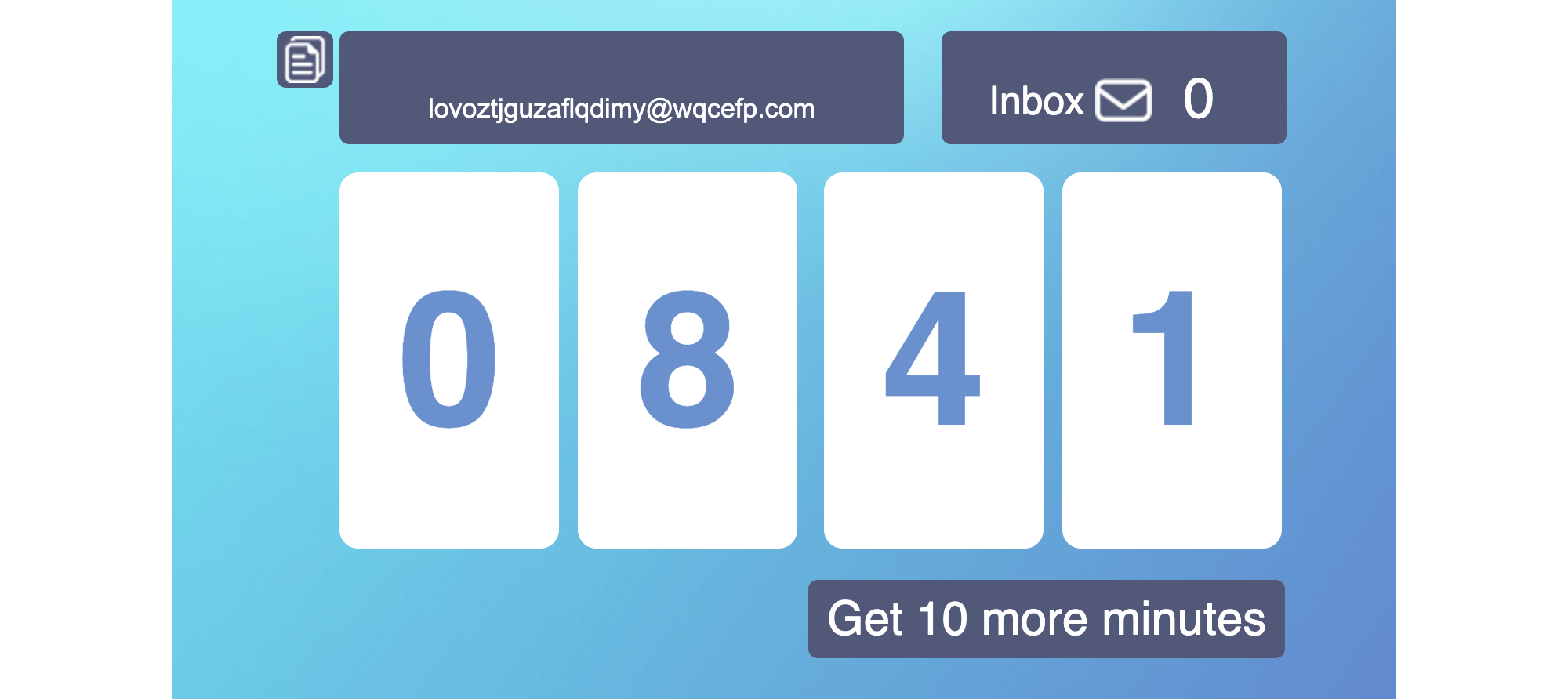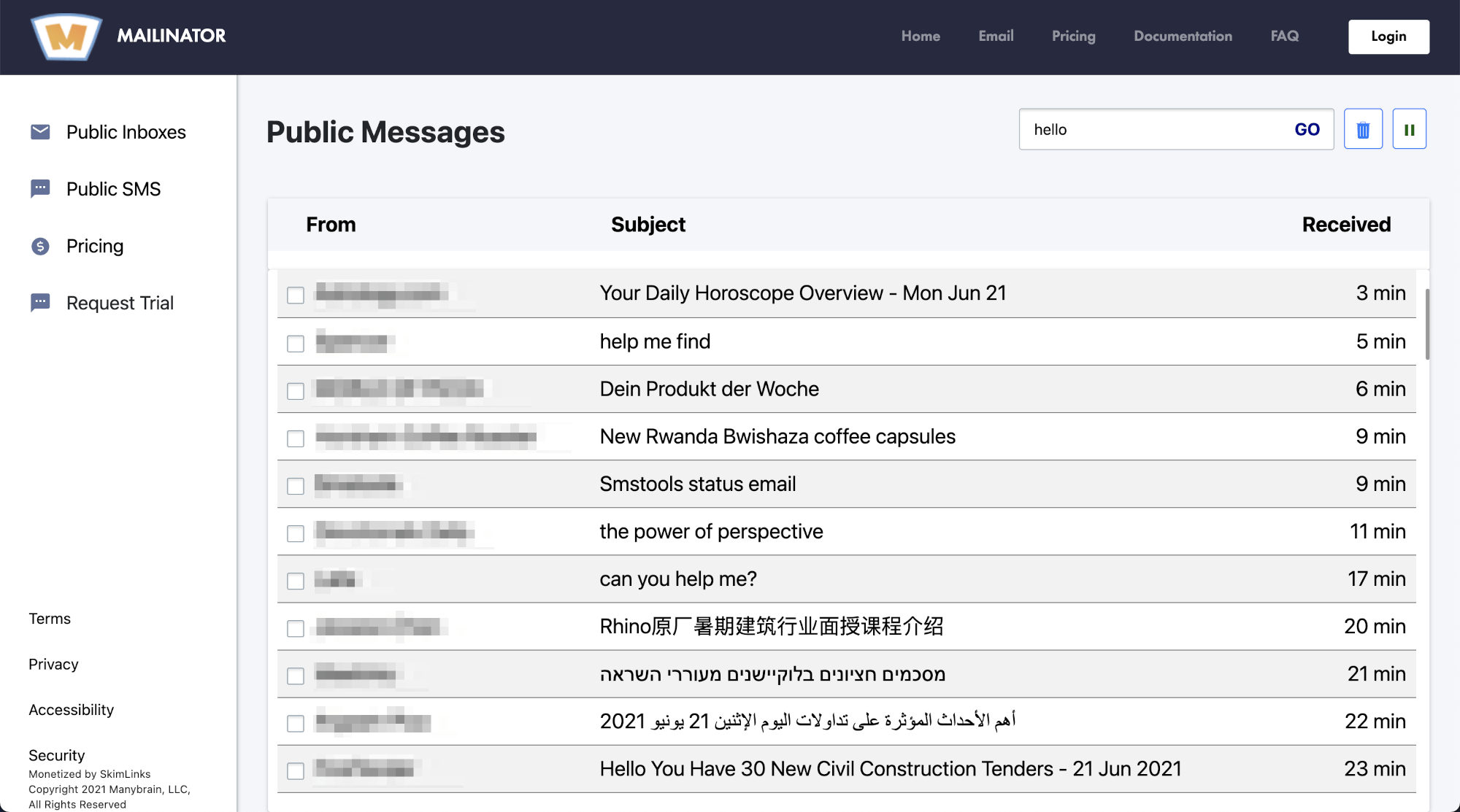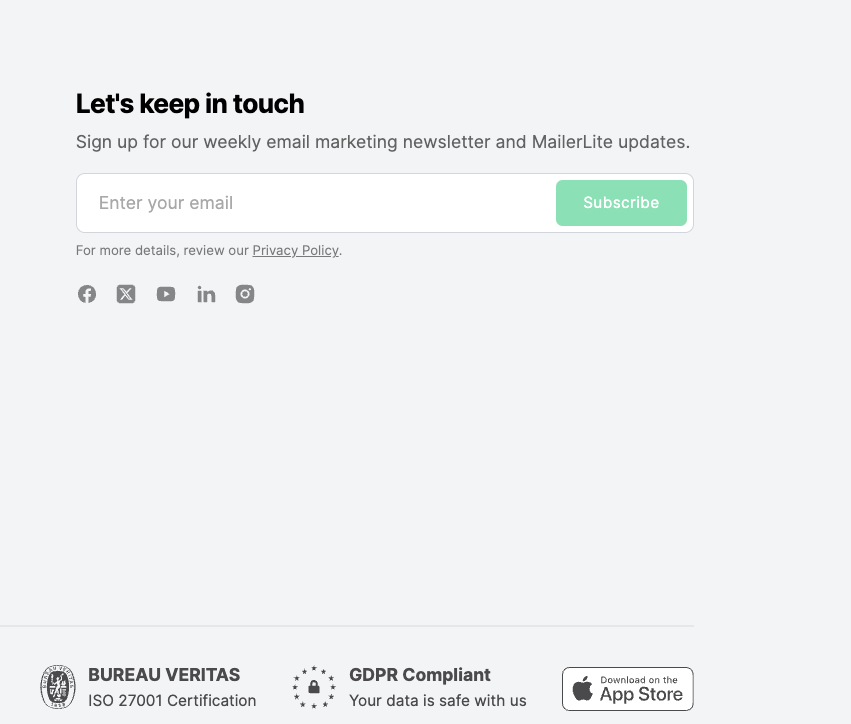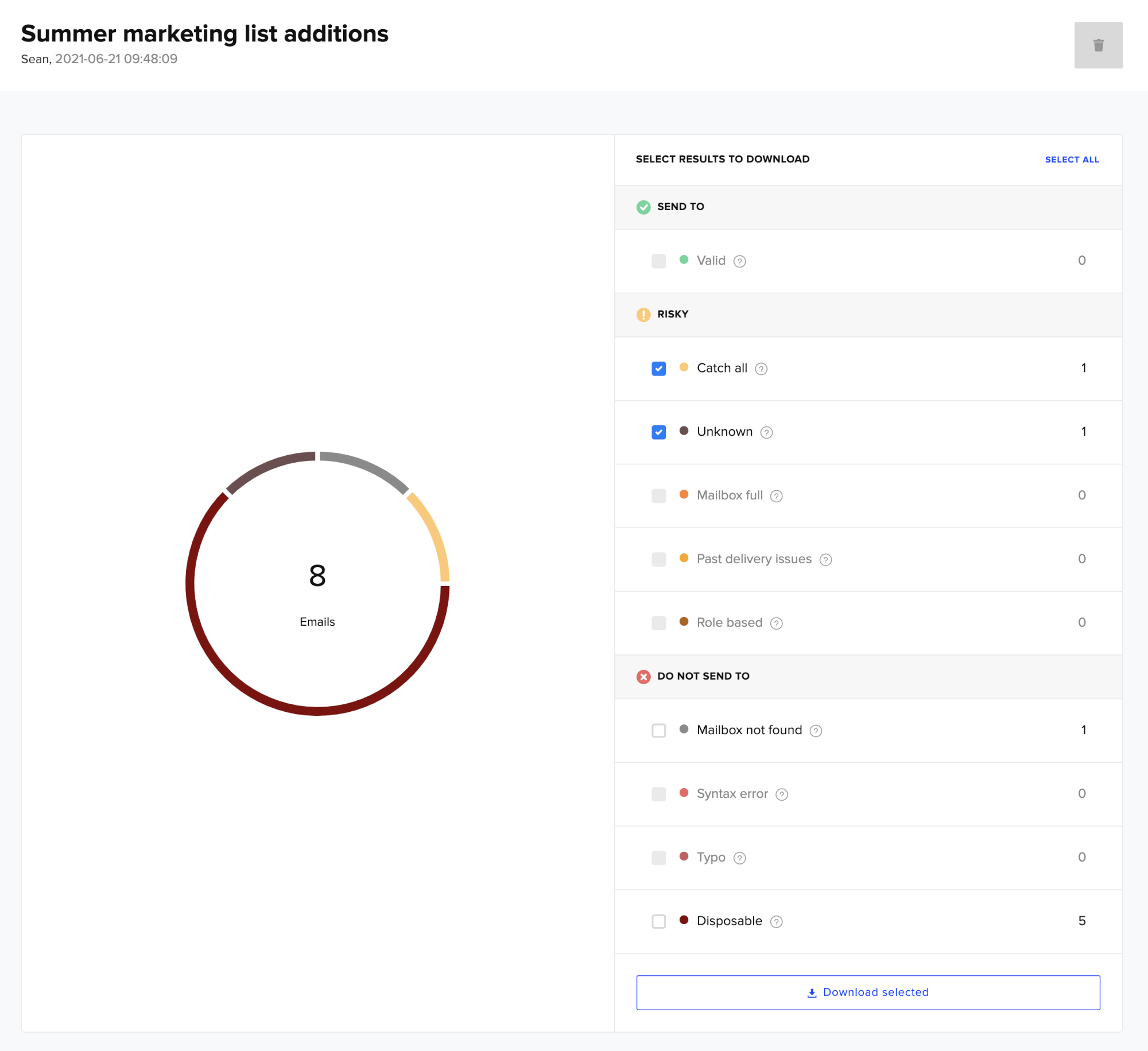What are disposable email addresses and how to block them
 Amy Elliott
Amy Elliott

- What is a disposable email address
- How long does a disposable email last
- Why people use disposable email addresses
- How disposable emails hurt email marketing
- How to block disposable emails
- 1. Build trust with the customer
- 2. Verify emails as you collect them
- 3. Practice good email list hygiene
- How to block disposable emails manually
- Conclusion
You’re not alone if you’ve noticed an increase in disposable email addresses on your subscriber list. More and more users are turning to temporary email addresses to protect their privacy online and avoid spam emails. Their prevalence is only set to grow as mainstream email providers like Apple and Yahoo Mail offer users the ability to generate disposable email addresses from within their inbox.
The good news is that, with the right tools, you can easily identify and block disposable email addresses in your subscriber list, and even prevent them from being added in the first place.
Ready for your crash course in disposable emails? Let’s go!
What is a disposable email address
A disposable email address (DEA) is a temporary email address that is used for a specific purpose and is discarded when no longer needed. Unlike a permanent email, it can be readily disposed of without affecting the rest of the user’s contacts and messages.
Disposable emails provide people with an instant email they can use when they don’t want to share their primary email address. These types of emails are valued for their privacy and security.
Here’s an example of a random email address created with a disposable email tool called Temp Mail that you can use to mask your real email address.

While people like using disposable email addresses to protect their privacy, email marketers find them troublesome due to poor campaign performance.
How long does a disposable email last?
Disposable emails can remain active anywhere from a few hours to several weeks, depending on the service provider. These email addresses are designed to be used for a short period of time and then discarded.
Here’s an example of a throwaway email address provider, 10 Minute Mail, that provides temporary inboxes that self-destruct after only 10 minutes!

You simply cannot know how long a disposable email will stay active for, plus, the user won’t be checking any messages sent to it anyway. This means, to avoid having disposable email addresses negatively impact your deliverability, it’s important to regularly clean your email list with an email verification tool like MailerCheck.
Ideally, you should also implement an email verification API wherever you collect email addresses, so any disposable emails (or other types of invalid emails) are blocked from making it to your email list. Prevention is the best medicine.
Clean your list with MailerCheck
Sign up now and get 10 free credits to get started.
Why people use disposable email addresses
There are a few reasons why someone might use a disposable email address. Some are perfectly understandable... others—not so much. Let's take a look.
Preserve privacy and safety
Disposable email accounts add a layer of security between the user and the Internet. For privacy and safety reasons, people may not want to reveal their actual email address—and thus identity—while engaging in online forums or interacting with websites and apps.
EmailOnDeck.com, for example, says that one use of their temporary email service is to trade cryptocurrency securely!
Abuse free trials and services offered to new customers
If a free product, service or trial is given out based on the user’s email address alone, some people may use a disposable email as a loophole to abuse the offer. For example, constantly generating a new temporary address to have continued access to a free trial or to receive multiple new user discount codes.
Harm others with malicious acts
Unfortunately, anonymous emails also provide a cover for bad actors on the Internet, such as spammers, phishers, and malware authors. People may use them to troll social media sites to attack individuals or provoke others with inflammatory content.
For example, fraudsters use these emails to create convincing phishing emails that appear to be from legitimate organizations, tricking victims into revealing sensitive information. After the scam, the disposable email can be discarded, making it difficult for victims to trace them.
Also, malicious users like internet trolls and vandals use disposable emails to create new accounts and circumvent bans on forums and wikis. When a site blocks their original email, they can easily generate a new one to continue their disruptive behavior.
Reduce unwanted emails
A temp email can be used to protect a person’s primary email account from spam lists and promotional emails. Customers may not trust a brand enough to share their main email address, or they may fear the theft of personal information from hacked databases.
Test products and services
Developers use free services like Mailinator to test their software, while people use disposable email addresses to try new products and services when they are not ready to commit yet. Thus, any unwanted emails are confined to the temporary email address.

How disposable emails hurt email marketing
Not all disposable email services have the same effect on your email campaigns. People who use forwarding emails and email aliases will receive your emails—and they will be marked as “delivered”. But other types will affect your email campaigns. Here's how.
Harms your sending reputation
Some throwaway email addresses will hard bounce when they expire or get discarded. Continuing to send to these inactive email accounts will hurt your sending reputation, get you labeled as a spammer, and ultimately affect your email deliverability.
A high number of hard bounces can get your domain or IP address blocklisted by email providers, meaning your emails will be sent directly to spam folders for all recipients, even legitimate ones. A bounce rate of above 2% is often seen as a sign of poor list hygiene.
Dilutes lead quality and conversion rates
Disposable emails are a strong indicator of low-quality leads. Users who sign up with a temporary address are often only interested in a one-time benefit, like a free trial or a discount code. This makes it difficult to convert them into paying customers and ultimately harms your returns on investment (ROI).
Skews email marketing metrics
People who use disposable email addresses for testing or malicious purposes will probably not interact with you. If you have such emails in your list, their zero open rates will skew your email marketing KPIs—making it hard for you to gauge the actual performance of your email marketing campaigns.
Wastes time and resources
Disposable emails that don’t go to primary email inboxes will inflate your email list size and thus the cost of sending email marketing campaigns. You're wasting money and your sales and marketing teams are wasting time and effort on contacts that are unlikely to generate any revenue.
3 ways to block disposable email addresses
1. Build trust with the customer
People use disposable email addresses because they do not trust most brands, or they are unsure how their personal information will be protected. They may fear accidental leaks of the customer database and theft of confidential information by hackers!
You can gain the trust of customers by being transparent about how you collect, use and protect their information. You could also assure people that their data is securely encrypted and will be of little use to bad actors unless it is decrypted.
For example, our email marketing partner, MailerLite, takes 3 steps to build trust with customers on its email signup forms:
Explaining what emails people who sign up will receive
Linking to the company privacy policy page
Displaying a GDPR compliance badge

2. Verify emails as you collect them
What if people still insist on using disposable email addresses to sign up? You can verify new emails as you collect them by using an email verification tool like MailerCheck. Connect it with your web apps using Zapier or use the email validation API wherever you gather emails.
How to set up real-time email verification with MailerCheck
1. If you haven’t done so already, create an API token so that you can link your app and MailerCheck, by selecting API tokens from the left-hand navigation menu and clicking Generate new token.
2. Configure your app or website so that the email address will be sent to MailerCheck for verification when the user submits it. When this happens, your app should perform an API call with the following POST request to verify a single email:
POST https://app.mailercheck.com/api/check/singleThe request body should look like this:
{
"email": "[email protected]"
}You should then return the status before the email address is added to the database. Here’s an example of a response:
{
"status": "valid"
}3. Practice good email list hygiene
When you use MailerCheck regularly to keep a sparkling clean list, you should also remove emails that are flagged as “disposable” in the cleaning report. These emails have been identified as risky and they will be responsible for most of your bounces in the future.

In addition, take a two-step approach to clean other types of emails in your list:
Remove invalid emails like those with syntax errors and non-existent mailboxes. These emails will be of no value to you because you won’t be able to reach them. This step should also clean up any hard bounces from throwaway emails that have long expired or have been deleted.
Identify and remove any inactive subscribers who didn't respond to a win-back campaign. This will sweep up any disposable emails that are still receiving emails but have been abandoned, prevent you from hitting spam traps, and keep your overall mailing list healthy.
How to clean your email list in 3 steps with MailerCheck
Finding and deleting your invalid and disposable addresses might seem like a chore, but we’ve made it super easy!
Step 1: Sign up to MailerCheck if you haven’t already (it’s free and you get 10 credits to start out with!), log in and upload your email list as a CSV file by navigating to Email verification and clicking Verify new list.
Step 2: Grab a coffee while MailerCheck scans your list for disposable emails, addresses with typos and syntax errors, catch-all emails and full inboxes.
Step 3: Review your report and get recommendations on what to do with the different types of emails found on your list. Select the email addresses you want to block to exclude them from your future campaigns!
Your list will be smaller but it’ll be filled with warm subscribers who want to receive your emails—quality and not quantity is the key here!
How to block disposable emails manually
While automated tools and APIs offer the most comprehensive solution, you can also take a more hands-on approach to managing disposable emails if you’re a smaller business or developer who may not have a budget for a dedicated service.
For marketers: Manually cleaning your email list
You can use the GitHub disposable email blocklist to manually clean your existing subscriber list or to add a layer of protection to your forms.
Step 1: Get the latest blocklist
The most widely used and reliable source is the community-maintained disposable-email-domains GitHub repository. Access the raw list of domains from here. This list is updated frequently, so it's a good practice to check it periodically.
Step 2: Clean your existing list
Export your email list: From your email marketing platform, export your subscriber list as a CSV file
Filter by domain: Open the CSV file in a spreadsheet program (like Microsoft Excel, Google Sheets, or LibreOffice Calc). Create a new column to extract the domain from each email address (the part after the @)
Compare and remove: Copy the list of domains from the GitHub blocklist into a separate sheet. Use a formula or a filtering function to identify and highlight any email addresses in your subscriber list that match a domain on the blocklist
Remove or suppress: Once identified, you can either manually delete these contacts from your list or move them to a "suppression" list. Alternatively, you could create a segment for all contacts with disposable domains, then set up an automation to instantly unsubscribe or delete them upon entry
Step 3: Block domains on your signup forms
Many email marketing platforms and website builders have a feature that allows you to manually block specific email domains from being submitted.
You could also create a blocklist segment in your ESP so you don't send to disposable domains. If you’re a MailerLite customer (and if not, try us out 😉) read the step-by-step tutorial on how to blocklist subscribers.
Word of caution: This method is effective but requires ongoing maintenance. It’s time-consuming and difficult to scale as your list grows. New disposable domains appear daily, so your manual list can quickly become outdated.
For developers: Implementing a manual check (Python example)
If you're building a website or application and want to implement a free, backend check without an API, you can use the same GitHub list.
Here's a simple example using Python.
Step 1: Download the blocklist
Your application needs to access the blocklist. You can either download the disposable_email_blocklist.conf file and include it in your project or have your code fetch it directly from GitHub's raw content URL.
Step 2: Write a simple python function
This function will check if a given email's domain is on the list.
Python
import requests
BLOCKLIST_URL = "https://raw.githubusercontent.com/disposable-email-domains/disposable-email-domains/main/disposable_email_blocklist.conf"
def get_disposable_domains():
try:
response = requests.get(BLOCKLIST_URL, timeout=5)
response.raise_for_status()
return set(response.text.splitlines())
except requests.exceptions.RequestException as e:
print(f"Error fetching blocklist: {e}")
return set()
DISPOSABLE_DOMAINS = get_disposable_domains()
def is_disposable_email(email_address):
parts = email_address.split('@')
if len(parts) != 2:
return False
domain = parts[-1].lower()
return domain in DISPOSABLE_DOMAINS
# Example usage
emails = ["[email protected]", "[email protected]", "[email protected]"]
for email in emails:
if is_disposable_email(email):
print(f"{email} → Disposable (blocked)")
else:
print(f"{email} → Valid (allowed)")
Step 3: Integrate into your web form
You can call this function on your server-side form submission. If the function returns True, you can display an error message to the user asking them to use a permanent email address.
Note: This approach, while a good starting point and is more scalable than the manual version, is still a constant "cat and mouse" game. New disposable email domains are created daily, and providers constantly rotate domains to bypass filters.
This means developers might have to spend valuable time and resources on ongoing list maintenance, handling false positives, and dealing with user support tickets.
Feeling exhausted just by reading all this? That’s why MailerCheck could be the perfect solution for you. 😇
Take care of disposable emails now!
Try MailerCheck for free and get access to our email verification API and 10 free credits to clean your list.
Keep cleaning disposable emails for a healthy list
Disposable email addresses are here to stay but they’re not all the same. Use an email verification tool like MailerCheck to clean risky disposable emails while keeping the good ones, and you’ll continue to grow a healthy email list!
What do you do to manage disposable emails? Share your tips in the comments.


